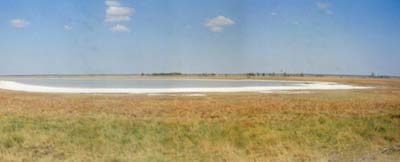Several environmental problems, such as acid rain, biocorrosion, etc., are caused by sulfur compounds, such as sulfur dioxide (SO2) and hydrogen sulfide (H2S). A sustainable process to remove these sulfur compounds is the production of elemental sulfur from H2S-containing gas streams by the use of sulfide-oxidizing bacteria. In this process, H2S is absorbed into the alkaline solution in the scrubber unit, followed by the biological oxidation of H2S to elemental sulfur and the recycling of water. With this two-step process, a variety of gas streams (i.e., natural gas, synthesis gas, biogas, and refinery gas) can be treated. For the treatment of sulfate-containing waste streams, an extra step has to be introduced: the transformation of sulfate into H2S by sulfate-reducing bacteria. In contrast to chemical sulfur removal processes, the biological removal process is cheaper, cleaner, and moreover sustainable, as the produced sulfur can be reused as soil fertilizer, fungicide, or raw material for the production of sulfuric acid. Currently, there are more than 25 such full-scale biological desulfurization installations worldwide, including two in Houston that clean sulfide from effluent and ventilation air and remove sulfide from biogas.

Soda lake from which Thioalkalivibrio sp. K90mix1 was isolated
Thioalkalivibrio sp. HL-EbGR7 has been isolated as a dominant sulfide-oxidizing bacterium from one of these full-scale sulfide-oxidizing bioreactors. Thioalkalivibrio sp. K90mix1 is an extremely salt tolerant relative isolated from a soda lake sediment. Thioalkalivibrio species are excellent candidates to perform sulfur oxidation under these conditions, as these conditions resemble the conditions at which they live in their natural habitat, i.e., soda lakes. However, their performance in large-scale industrial bioreactors might be far from optimal. Whole-genome DNA microarrays will be used as tools to study gene expression under different environmental conditions, giving the opportunity to adjust environmental parameters for optimal performance of these organisms, which is of paramount importance for a clean and healthy environment. In addition, this project has relevance for the Climate Change Research Program of the DOE, as the sequence information will further our understanding and application of microbially mediated CO2 fixation at high pH and high salinity.
Principal Investigators: Gerard Muyzer and Dmitri Yu Sorokin (Delft Univ. of Technology), and Roland Siezen (Radboud Univ., Nijmegen)